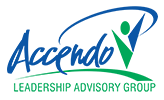
Know Me, Love Me, Guide Me: A Leadership Approach that Ignites People and Drives Engagement
Why isn’t engagement better in America and how do we improve it? For more than a decade, U.S. workers engaged in their jobs has fluctuated in the low-to-mid 30% range according to Gallup’s annual employee engagement poll. Gallup’s research shows that employee engagement is strongly connected to business outcomes essential to an organization’s success, such as productivity, profitability and customer engagement.
So, if this is critically important, how do we drive higher engagement? After coaching hundreds of executives, and operated as C-suite executives ourselves, we’ve experimented with many different methods. One we share often is out of Karen’s playbook as a bank executive but has proven to be agnostic to any specific industry. The approach encompasses three guiding principles: Know Me, Love Me, and Guide Me. It’s an approach that ignites people, and it works. Here’s Karen’s case study.
How many of you have worked for a leader who has never taken the time or interest to know you, your interests, or what makes you want to come to work? We have and it is incredibly disengaging as an employee. Karen once worked for a senior leader for several years, who in that entire time never asked about her, her family or her motivations. She drove in a car with him for several hours visiting clients. It sent her a signal that he only cared about her “exceeds expectations performance” and had no real interest in what motivated her as a wife, a mother, a person.
Conversely, what’s it like to work for a boss who genuinely enjoys finding out about you and your employees? They know everyone’s name, their children’s activities and their passions. These leaders know that by engaging everyone they are sending a signal of their importance.
There’s real value in taking the time to get to know the people you worked with. Here’s a best practice to weave into your daily leadership routine: incorporate into employee conversations three basic questions: What made you originally come to work here? What keeps you here? and What would make you leave? You might be surprised how honest people will be, and, if you ensure confidentiality, it will provide valuable intel to help you better manage your team.
When you think about it, getting to know your people, your most precious assets, is so easy, yet so many leaders fail to do it. Developing discipline around ensuring this happens will truly pay dividends in igniting the workforce.
Love in the workplace means displaying emotion that shows affection and appreciation. Synonyms for love are fondness, friendship, passion, respect, allegiance, attachment, delight, and enjoyment. Loving your peoplebreeds loyalty. Loyal, engaged employees treat clients better and have increased productivity. Care about your employees. Appreciate them. Find out how they want to be rewarded and recognized, and then do so often and sincerely.
We have experimented with different ways to seek opinions and input. Listening sessions, a process where executives huddle with small groups of employees to simply “listen” to what’s going well and what can be improved, is a great way to find out what’s really happening. Employees are amazingly truthful when approached in this fashion. Reporting back to employees the broad themes heard and action steps that will be taken to address concerns is critical to ensuring the process has credibility. Done correctly this process makes people feel valued sending a signal that management cares enough to hear from them directly and put their ideas into action.
Employees want guidance; to be led and inspired. They need to be crystal clear on the vision and how they fit into it. Having a plan on how a goal is going to be achieved and helping all to visualize how it will feel when they succeed is imperative to igniting their engagement. Employees want to understand and be a part of a higher purpose so that they can connect the dots and feel satisfied about their contribution toward the greater goal.
An individual development plan helps employees understand where they fit and where they are going. IDP’s should be short and simple outlining one personal strength to leverage and one development goal to work on. We recommend working on only two goals a year, to ensure they are achievable. The plan should be linked to the individual’s career goals, with specific actionable steps and associated timeline for completion. Managers should be required to discuss these plans with their direct reports a minimum of twice a year, ideally not during performance reviews. Development conversations are most effective when separate and apart from performance conversations so they can remain solely about what’s needed to achieve an employee’s career aspirations. Integrating resources to help employees reach their goals, like assigning mentors or hiring coaches should be detailed in the action steps. Leaders who are vested in employee development inspire their people and signal they truly care.
So, if you’re looking for an approach that will ignite people and drive employee engagement, think – Know Me, Love Me, Guide Me. It’s simple and proven. What are you waiting for?
